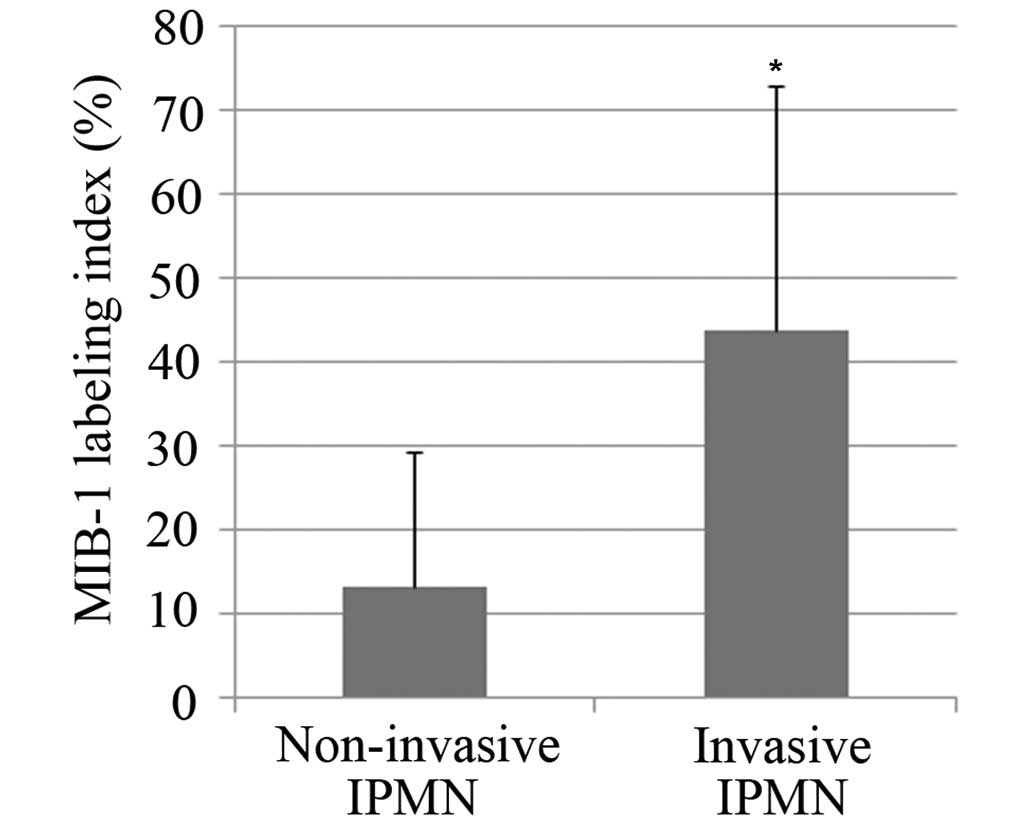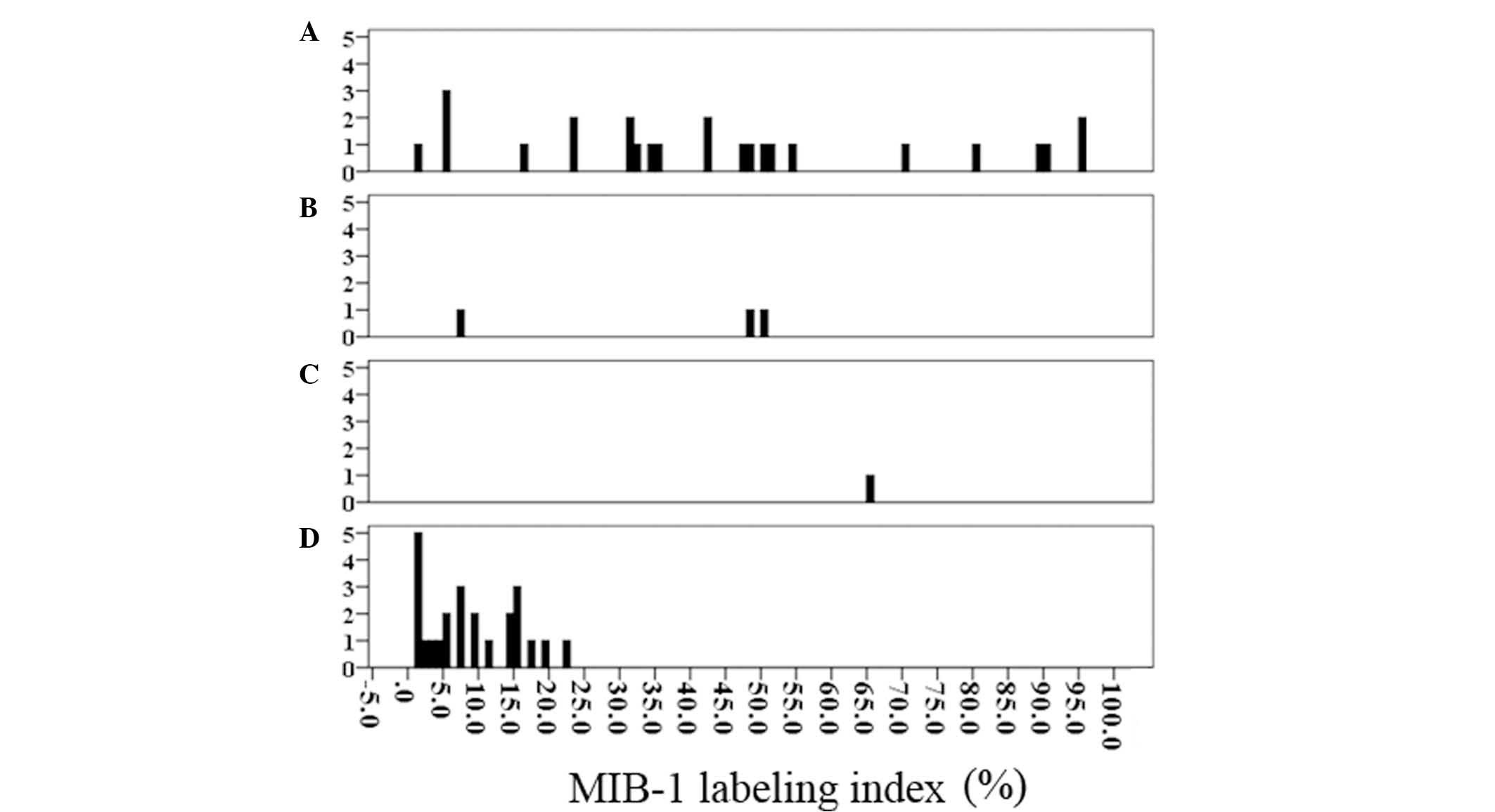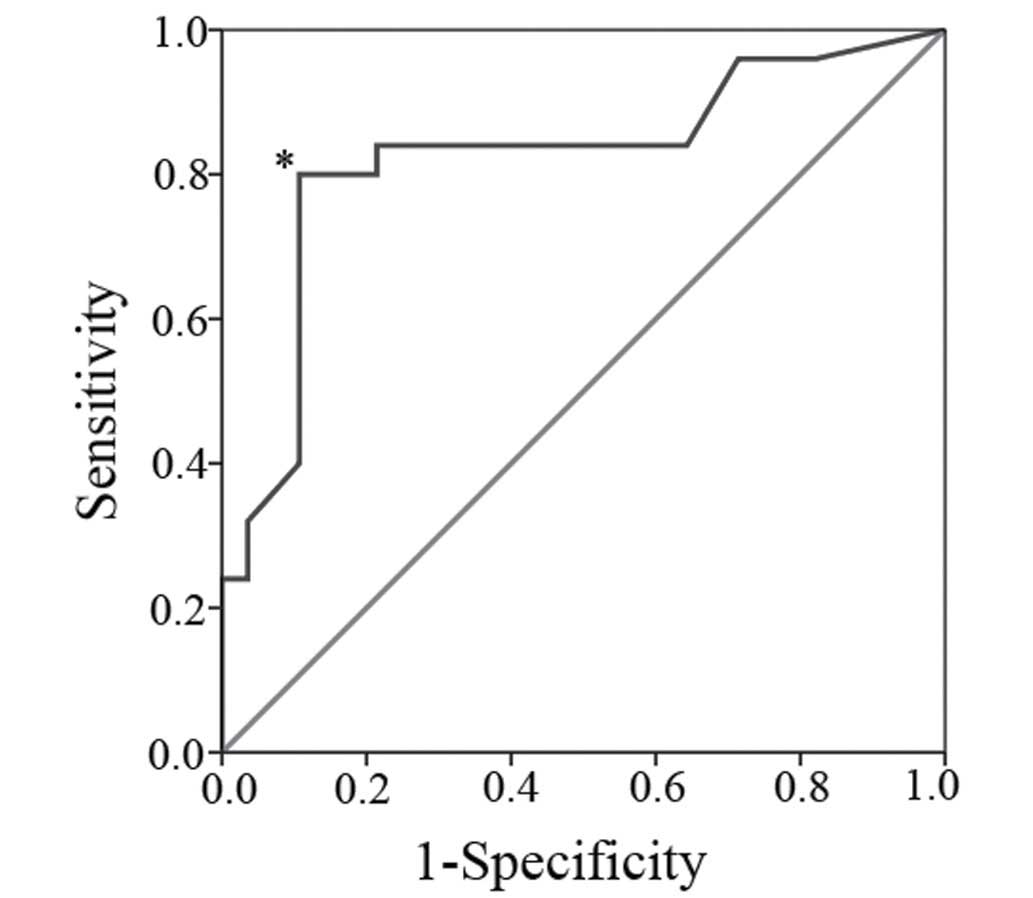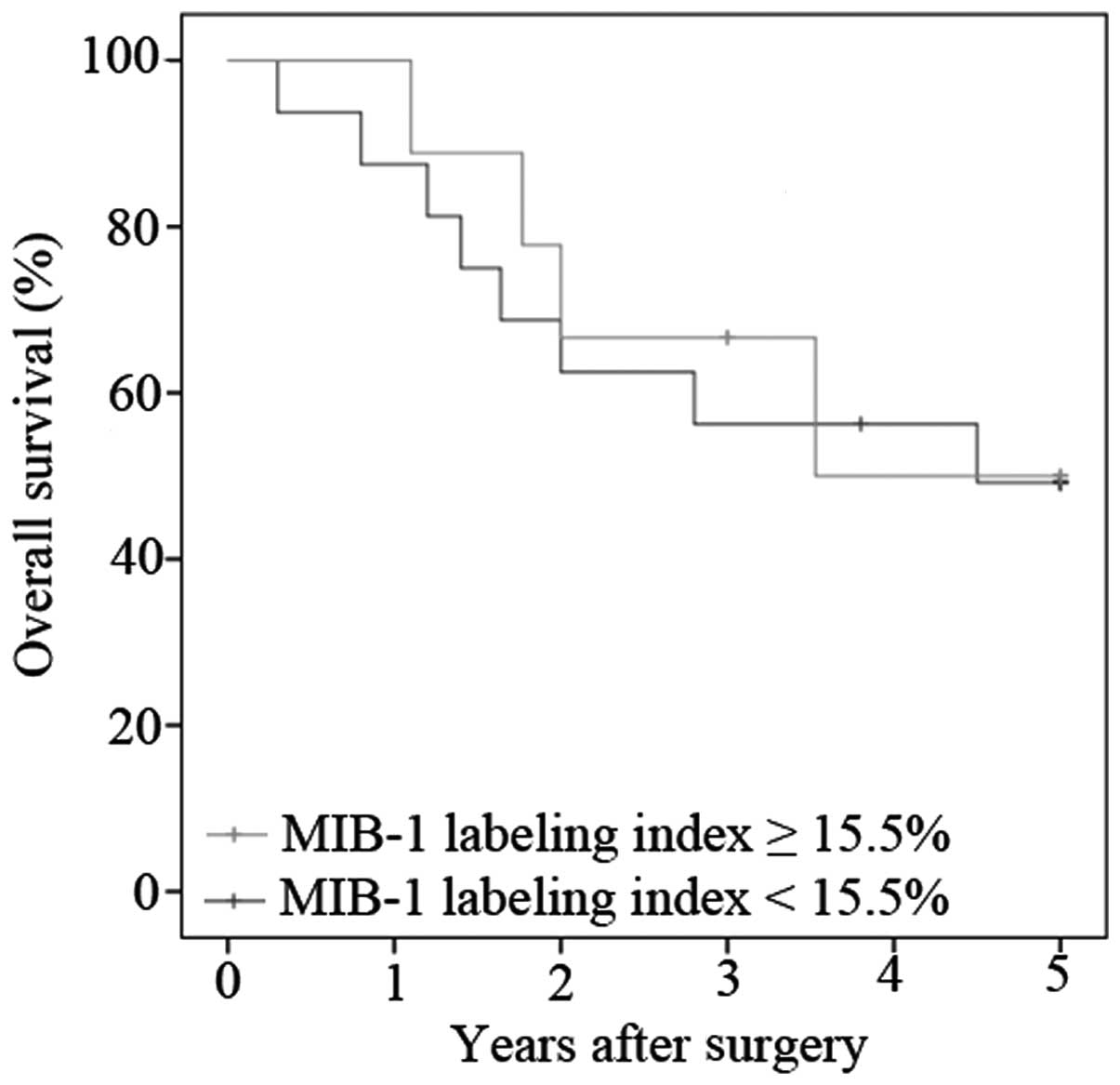|
1
|
Ohashi K, Murakami Y, Maruyama M,
Takekoshi T, Ohta H, Ohhashi I, Takagi K and Kato K: Four cases of
mucous secreting pancreatic cancer. Prog Dig Endosc. 20:348–351.
1982.
|
|
2
|
Werner J, Fritz S and Büchler MW:
Intraductal papillary mucinous neoplasms of the pancreas-a surgical
disease. Nat Rev Gastroenterol Hepatol. 9:253–259. 2012. View Article : Google Scholar : PubMed/NCBI
|
|
3
|
Tanaka M, Chari S, Adsay V, Fernandez-del
Castillo C, Falconi M, Shimizu M, Yamaguchi K, Yamao K and Matsuno
S: International Association of Pancreatology: International
consensus guidelines for management of intraductal papillary
mucinous neoplasms and mucinous cystic neoplasms of the pancreas.
Pancreatology. 6:17–32. 2006. View Article : Google Scholar : PubMed/NCBI
|
|
4
|
Tanaka M, del Fernández Castillo C, Adsay
V, Chari S, Falconi M, Jang JY, Kimura W, Levy P, Pitman MB,
Schmidt CM, et al: International consensus guidelines 2012 for the
management of IPMN and MCN of the pancreas. Pancreatology.
12:183–197. 2012. View Article : Google Scholar : PubMed/NCBI
|
|
5
|
Salvia R, Fernández-del Castillo C, Bassi
C, Thayer SP, Falconi M, Mantovani W, Pederzoli P and Warshaw AL:
Main-duct intraductal papillary mucinous neoplasms of the pancreas:
Clinical predictors of malignancy and long-term survival following
resection. Ann Surg. 239:678–685; discussion 685–687. 2004.
View Article : Google Scholar : PubMed/NCBI
|
|
6
|
Roch AM, Ceppa EP, Al-Haddad MA, DeWitt
JM, House MG, Zyromski NJ, Nakeeb A and Schmidt CM: The natural
history of main duct-involved, mixed-type intraductal papillary
mucinous neoplasms: Parameters predictive of progression. Ann Surg.
260:680–688; discussion 688–690. 2014. View Article : Google Scholar : PubMed/NCBI
|
|
7
|
Sugiyama M, Izumisato Y, Abe N, Masaki T,
Mori T and Atomi Y: Predictive factors for malignancy in
intraductal papillary-mucinous tumors of the pancreas. Br J Surg.
90:1244–1249. 2003. View
Article : Google Scholar : PubMed/NCBI
|
|
8
|
Fritz S, Hackert T, Hinz U, Hartwig W,
Büchler MW and Werner J: Role of serum carbohydrate antigen 19-9
and carcinoembryonic antigen in distinguishing between benign and
invasive intraductal papillary mucinous neoplasm of the pancreas.
Br J Surg. 98:104–110. 2011. View
Article : Google Scholar : PubMed/NCBI
|
|
9
|
Kang MJ, Jang JY, Kim SJ, Lee KB, Ryu JK,
Kim YT, Yoon YB and Kim SW: Cyst growth rate predicts malignancy in
patients with branch duct intraductal papillary mucinous neoplasms.
Clin Gastroenterol Hepatol. 9:87–93. 2011. View Article : Google Scholar : PubMed/NCBI
|
|
10
|
He J, Cameron JL, Ahuja N, Makary MA,
Hirose K, Choti MA, Schulick RD, Hruban RH, Pawlik TM and Wolfgang
CL: Is it necessary to follow patients after resection of a benign
pancreatic intraductal papillary mucinous neoplasm? J Am Coll Surg.
216:657–665; discussion 665–667. 2013. View Article : Google Scholar : PubMed/NCBI
|
|
11
|
Fritz S, Schirren M, Klauss M, Bergmann F,
Hackert T, Hartwig W, Strobel O, Grenacher L, Büchler MW and Werner
J: Clinicopathologic characteristics of patients with resected
multifocal intraductal papillary mucinous neoplasm of the pancreas.
Surgery. 152(3 Suppl 1): S74–S80. 2012. View Article : Google Scholar : PubMed/NCBI
|
|
12
|
Sturm EC, Roch AM, Shaffer KM, Schmidt CM
II, Lee SJ, Zyromski NJ, Pitt HA, Dewitt JM, Al-Haddad MA, Waters
JA and Schmidt CM: Obesity increases malignant risk in patients
with branch-duct intraductal papillary mucinous neoplasm. Surgery.
154:803–808; discussion 808–809. 2013. View Article : Google Scholar : PubMed/NCBI
|
|
13
|
Tang LH, Gonen M, Hedvat C, Modlin IM and
Klimstra DS: Objective quantification of the Ki67 proliferative
index in neuroendocrine tumors of the gastroenteropancreatic
system: A comparison of digital image analysis with manual methods.
Am J Surg Pathol. 36:1761–1770. 2012. View Article : Google Scholar : PubMed/NCBI
|
|
14
|
Viale G, Giobbie-Hurder A, Regan MM,
Coates AS, Mastropasqua MG, Dell'Orto P, Maiorano E, MacGrogan G,
Braye SG, Ohlschlegel C, et al: Prognostic and predictive value of
centrally reviewed Ki-67 labeling index in postmenopausal women
with endocrine-responsive breast cancer: Results from Breast
International Group Trial 1–98 comparing adjuvant tamoxifen with
letrozole. J Clin Oncol. 26:5569–5575. 2008. View Article : Google Scholar : PubMed/NCBI
|
|
15
|
Semba S, Moriya T, Kimura W and Yamakawa
M: Phosphrylated Akt/PKB controls cell growth and apoptosis in
intraductal papillary-mucinous tumor and invasive ductal
adenocarcinoma of the pancreas. Pancreas. 26:250–257. 2003.
View Article : Google Scholar : PubMed/NCBI
|
|
16
|
Kataoka TR, Ioka T, Tsukamoto Y, Matsumura
M, Ishiguro S and Nishizawa Y: Nuclear expression of STAT5 in
intraductal papillary mucinous neoplasms of the pancreas. Int J
Surg Pathol. 15:277–281. 2007. View Article : Google Scholar : PubMed/NCBI
|
|
17
|
Okada K, Masuda N, Fukai Y, Shimura T,
Nishida Y, Hosouchi Y, Kashiwabara K, Nakajima T and Kuwano H:
Immunohistochemical expression of 14-3-3 sigma protein in
intraductal papillary mucinous tumor and invasive ductal carcinoma
of the pancreas. Anticancer Res. 26:3105–3110. 2006.PubMed/NCBI
|
|
18
|
Abe K, Suda K, Arakawa A, Yamasaki S,
Sonoue H, Mitani K and Nobukawa B: Different patterns of p16INK4A
and p53 protein expressions in intraductal papillary-mucinous
neoplasms and pancreatic intraepithelial neoplasia. Pancreas.
34:85–91. 2007. View Article : Google Scholar : PubMed/NCBI
|
|
19
|
Okimura A, Hirano H, Nishigami T, Ueyama
S, Tachibana S, Fukuda Y, Yamanegi K, Ohyama H, Terada N and
Nakasho K: Immunohistochemical analysis of E cadherin,
beta-catenin, CD44s, and CD44v6 expressions, and Ki-67 labeling
index in intraductal papillary mucinous neoplasms of the pancreas
and associated invasive carcinomas. Med Mol Morphol. 42:222–229.
2009. View Article : Google Scholar : PubMed/NCBI
|
|
20
|
Islam HK, Fujioka Y, Tomidokoro T, Sugiura
H, Takahashi T, Kondo S and Katoh H: Immunohistochemical analysis
of expression of molecular biologic factors in intraductal
papillary-mucinous tumors of pancreas-diagnostic and biologic
significance. Hepatogastroenterology. 46:2599–2605. 1999.PubMed/NCBI
|
|
21
|
Terada T, Ohta T, Kitamura Y, Ashida K and
Matsunaga Y: Cell proliferative activity in intraductal
papillary-mucinous neoplasms and invasive ductal adenocarcinomas of
the pancreas: An immunohistochemical study. Arch Pathol Lab Med.
122:42–46. 1998.PubMed/NCBI
|
|
22
|
Takeshita A, Kimura W, Hirai I, Takasu N,
Moriya T, Tezuka K and Watanabe T: Clinicopathologic study of the
MIB-1 labeling index (Ki67) and postoperative prognosis for
intraductal papillary mucinous neoplasms and ordinary ductal
adenocarcinoma. Pancreas. 41:114–120. 2012. View Article : Google Scholar : PubMed/NCBI
|
|
23
|
Yamao K, Yanagisawa A, Takahashi K, Kimura
W, Doi R, Fukushima N, Ohike N, Shimizu M, Hatori T, Nobukawa B, et
al: Clinicopathological features and prognosis of mucinous cystic
neoplasm with ovarian-type stroma: A multi-institutional study of
the Japan pancreas society. Pancreas. 40:67–71. 2011. View Article : Google Scholar : PubMed/NCBI
|
|
24
|
Hirooka Y, Goto H, Itoh A, Hashimoto S,
Niwa K, Ishikawa H, Okada N, Itoh T and Kawashima H: Case of
intraductal papillary mucinous tumor in which endosonography-guided
fine-needle aspiration biopsy caused dissemination. J Gastroenterol
Hepatol. 18:1323–1324. 2003. View Article : Google Scholar : PubMed/NCBI
|













